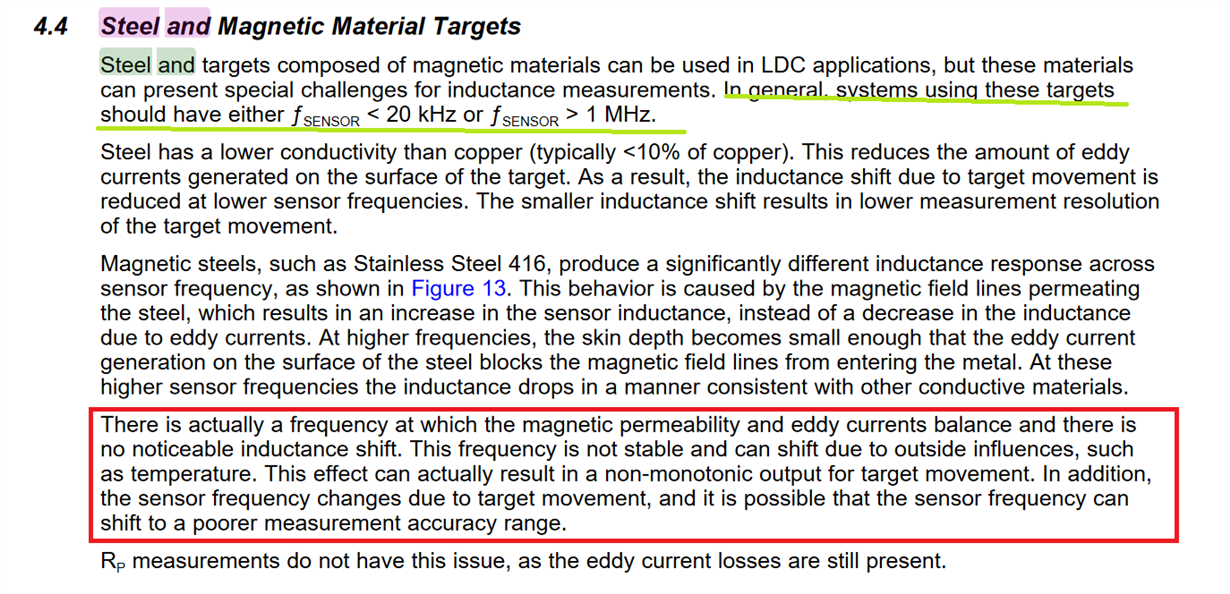Other Parts Discussed in Thread: LDC1101
Hi Experts,
I'm new to sensors like LDC1101(metal detection), I just want to ask
1) what is Rp+L mode? what does Rp indicates here?
2) For using Rp+L mode do we need to do any register configuration?
3) I want to detect metal thickness using LDC1101, so will I be able to measure thickness of a metal using LDC1101?
Sorry for my questions, as I'm asking I'm new here. Please guide me with giving me some of your valuable information. I will be grateful for that.


